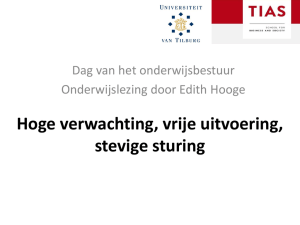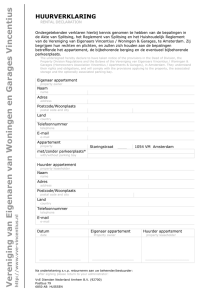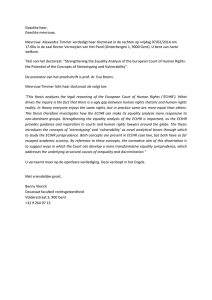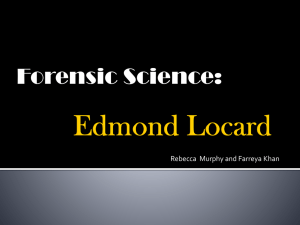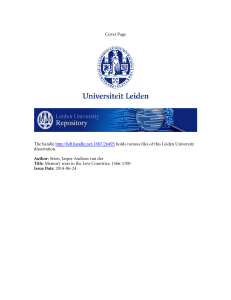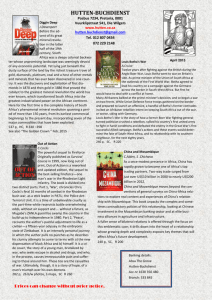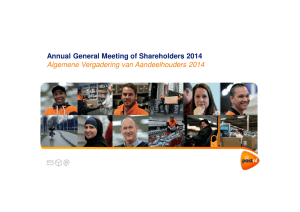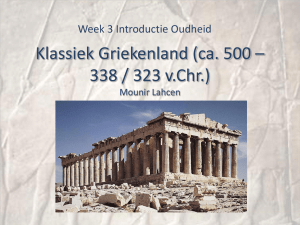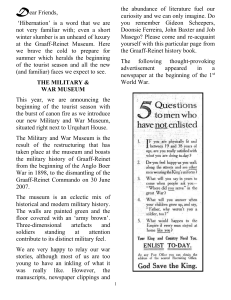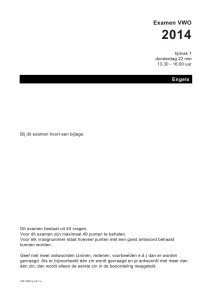Whodunit? van Dr. Luca Consoli (1.3 MB)
advertisement
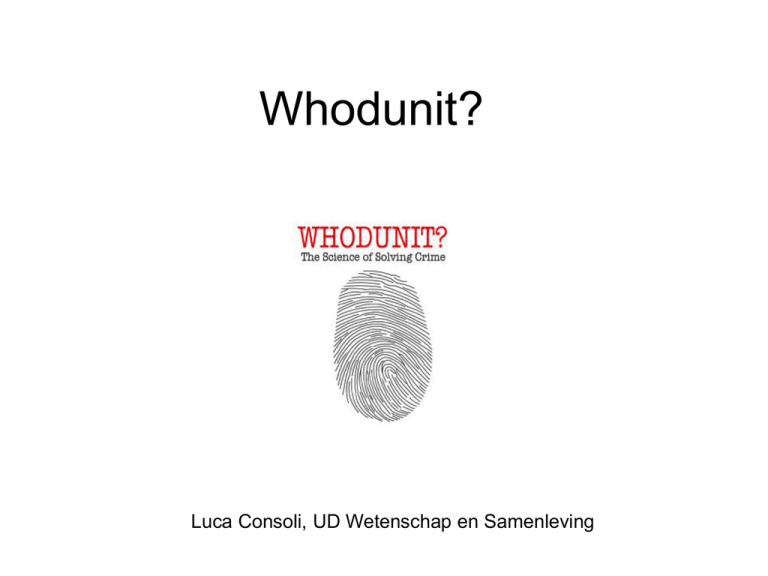
Whodunit? Luca Consoli, UD Wetenschap en Samenleving Dus: Forensisch ‘wetenschap’ is meer dan alleen wetenschap! Forensic Science Toepassing van wetenschap om misdaad op te lossen / in de rechtszaal Wetenschap en verantwoordelijkheid • Bij wie ligt eigenlijk de verantwoordelijkheid als er sprake is van wetenschappelijke onzekerheid? – De rechter? En wat hij/zij doen dan? – De wetenschapper/expert? Moet hij/zij dan weigeren om te getuigen? Wij moeten mijns inziens blijven realiseren dat het gebruik van formele systemen, of het nu gaat om dogmatiek, deductieve logica of probabilistiek, betrekkelijke betekenis heeft, omdat de bruikbaarheid van de uitkomsten staat en valt met de formulering van het probleem in kwestie in de termen van het formele systeem. Daarbij gemaakte keuzes zullen altijd, ofschoon expliciterbaar, inherent arbitrair zijn. En daarmee wordt duidelijk dat statistische analyse en bewerking de taak van rechter of jury bij de vaststelling van feiten in rechte niet kunnen overnemen. (J. F. Nijboer) Spanningsveld ‘De wetenschap gaat uit van twijfel en in het strafrecht probeer je juist twijfel uit te bannen’ “Why didn't you say something when you gave us the case?" "Well, in science we learn through experimentation, right? Sometimes we need to see it to believe it. You guys did a nice job. History & Development of Forensic Science When in Rome… • “Forensic” comes from the Latin word “forensis” meaning forum. • During the time of the Romans, a criminal charge meant presenting the case before the public. • Both the person accused of the crime & the accuser would give speeches based on their side of the story. • The individual with the best argumentation would determine the outcome of the case. Maar… • 700s Chinese used fingerprints to establish identity of documents and clay sculpture, but without any formal classification Sir Arthur Conan Doyle • Sci-fi author in late 1800’s • Popularized scientific crime-detection methods through his fictional character ‘Sherlock Holmes’. Mathieu Orfila (1787-1853) • “Father of Toxicology” • Wrote about the detection of poisons & their effects on animals. Case study • Toxicology on trial: Mathieu Orfila and the Lafarge murder case (http://www.nlm.nih.gov/visibleproofs/galler ies/cases/orfila_image_2.html) Case study 2 • Making Toxicology Visible: the Vosburgh poisoning case “The jury found Vosburgh not guilty, despite the courtroom chemical analysis” Alphonse Bertillon (1853-1914) • “Father of Anthropometry” • Developed a system to distinguish one individual person from another based on certain body measurements. Anthropometry Francis Galton (1822-1911) • “Father of Fingerprinting” • Developed fingerprinting as a way to uniquely identify individuals. Leone Lattes (1887-1954) • “Father of Bloodstain Identification” • He developed a procedure for determining the blood type (A, B, AB, or O) of a dried blood stain. Calvin Goddard (1891-1955) • “Father of Ballistics” • Developed the technique to examine bullets, using a comparison microscope, to determine whether or not a particular gun fired the bullets. Albert Osborn (1858-1946) • “Father of Document Examination” • His work led to the acceptance of documents as scientific evidence by the courts. Walter McCrone (1916-2002) • “Father of Microscopic Forensics” • He developed & applied his microscope techniques to examine evidence in countless court cases. Hans Gross (1847-1915) • “Father of Forensic Publications” • Wrote the book on applying all the different science disciplines to the field of criminal investigation. Edmond Locard (1877-1966) • “Father of the Crime Lab” • In 1910, he started the 1st crime lab in an attic of a police station. • With few tools, he quickly became known worldwide to forensic scientists & criminal investigators & eventually founded the Institute of Criminalistics in France. • His most important contribution was the “Locard’s Exchange Principle” Locard’s Exchange Principle • “Every Contact Leaves a Trace.” • He believed that every criminal can be connected to a crime by particles carried from the crime scene. • When a criminal comes in contact with an object or person, a cross-transfer of evidence occurs. Extra bronnen • www.forensicdna.com • http://www.forensischinstituut.nl/ • http://www.nlm.nih.gov/visibleproofs/galleri es/ I tend not to believe people; they lie. The evidence never lies (?)

